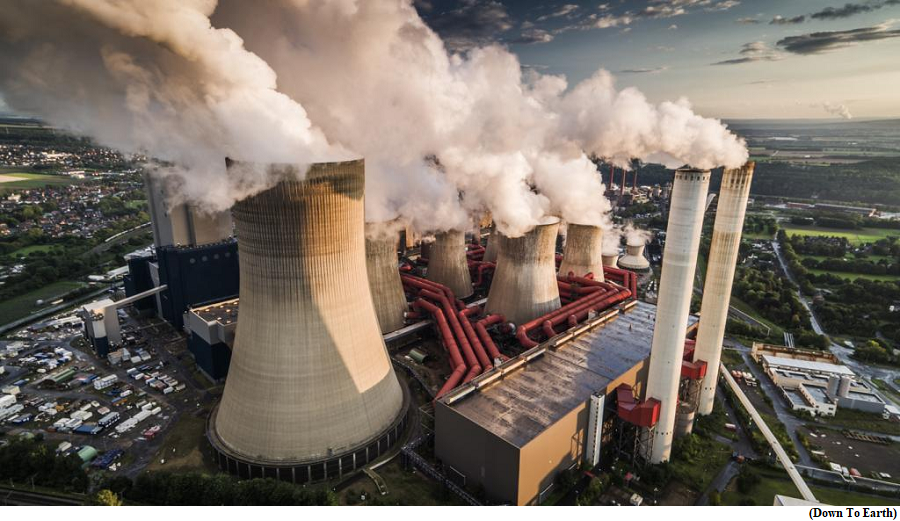India that is Bharat, From the Rig Veda to the Constitution of India (GS Paper 2, Polity and Constitution)

Why in news?
- The opposition politicians have been posting images of an official invitation to a G20 dinner hosted by “The President of Bharat” instead of the usual “President of India”.
Details:
- There is speculation of an official change in the name of the country from India to Bharat, even though Article 1 of the Constitution uses the two names interchangeably: “India, that is Bharat, shall be a Union of States.”
- Also, several names such as Reserve Bank of India and the Indian Railways already have Hindi variants with “Bharatiya” in them.
- In June 2020, the Supreme Court had dismissed a PIL seeking to remove “India” from the Constitution and retain only Bharat in order to “ensure the citizens of this country…get over the colonial past” saying: “India is already called Bharat in the Constitution itself.”
Where does the name ‘Bharat’ come from?
- The roots of “Bharat”, “Bharata”, or “Bharatvarsha” are traced back to Puranic literature, and to the epic Mahabharata. The Puranas describe Bharata as the land between the “sea in the south and the abode of snow in the north”.
- Social scientist Catherine Clémentin-Ojha explained Bharata in the sense of a religious and socio-cultural entity, rather than a political or geographical one. ‘Bharata’ refers to the “supraregional and subcontinental territory where the Brahmanical system of society prevails”.
- Bharata is also the name of the ancient king of legend who was the ancestor of the Rig Vedic tribe of the Bharatas, and by extension, the progenitor of all peoples of the subcontinent.
- Writing in January 1927, Jawaharlal Nehru alluded to the “fundamental unity of India” that has endured from “the remote past”: “a unity of a common faith and culture. India was Bharata, the holy land of the Hindus, and it is not without significance that the great places of Hindu pilgrimage are situated in the four corners of India — the extreme South overlooking Ceylon, the extreme West washed by the Arabian Sea, the East facing the Bay of Bengal and the North in the Himalayas.”
What about ‘India’ and ‘Hindustan’?
- The name Hindustan is thought to have derived from ‘Hindu’, the Persian cognate form of the Sanskrit ‘Sindhu’ (Indus), which came into currency with the Achaemenid Persian conquest of the Indus valley (northwestern parts of the subcontinent) that begin in the 6th century BC (which was the time of The Buddha in the Gangetic basin).
- The Achaemenids used the term to identify the lower Indus basin, and from around the first century of the Christian era, the suffix “stan” came to be used with the name to create “Hindustan”.
- The Greeks, who had acquired knowledge of ‘Hind’ from the Achaemenids, transliterated the name as ‘Indus’. By the time the Macedonian king Alexander invaded India in the 3rd century BC, ‘India’ had come to be identified with the region beyond the Indus.
- By the time of the early Mughals (16th century), the name ‘Hindustan’ was used to describe the entire Indo-Gangetic plain. Historian Ian J Barrow in his article, ‘From Hindustan to India: Naming Change in Changing Names’ wrote that “in the mid-to-late eighteenth century, Hindustan often referred to the territories of the Mughal emperor, which comprised much of South Asia”.
- From the late 18th century onwards, British maps increasingly began to use the name ‘India’, and ‘Hindustan’ started to lose its association with all of South Asia.
- Part of the appeal of the term India may have been its Graeco-Roman associations, its long history of use in Europe, and its adoption by scientific and bureaucratic organisations such as the Survey of India.
How did ‘Bharat’ and ‘India’ come into the Constitution?
- In Discovery of India’, Nehru referred to “India”, “Bharata” and “Hindustan”: “Often, as I wandered from meeting to meeting, I spoke to my audiences of this India of ours, of Hindustan and of Bharata, the old Sanskrit name derived from the mythical founders of the race.”
- But when the question of naming India in the Constitution arose, ‘Hindustan’ was dropped, and both ‘Bharat’ and ‘India’ were retained.
- During the Constituent Assembly debates the “Name and territory of the Union” was taken up for discussion on September 17, 1949. Right from the time the first article was read out as “India, that is Bharat, shall be a Union of States”, a division arose among the members.
- There were quite a few members who were against the use of the name ‘India’, which they saw as being a reminder of the colonial past.
- Hari Vishnu Kamath suggested that the first article should read, “Bharat, or in the English language, India, shall be and such”.
- Seth Govind Das, representing the Central Provinces and Berar, proposed: “Bharat known as India also in foreign countries”.
- Hargovind Pant, who represented the hill districts of the United Provinces, made it clear that the people of Northern India “wanted Bharatvarsha and nothing else”.
- Pant argued: “So far as the word ‘India’ is concerned, the Members seem to have, and really I fail to understand why, some attachment for it. We must know that this name was given to our country by foreigners who, having heard of the riches of this land, were tempted towards it and had robbed us of our freedom in order to acquire the wealth of our country. If we, even then, cling to the word ‘India’, it would only show that we are not ashamed of having this insulting word which has been imposed on us by alien rulers.”
- None of the suggestions were accepted by the committee. However, as Clémentin-Ojha pointed out in her article, they “illustrated contrasting visions of the budding nation’.
11 rich countries like Germany, UK will need 2 centuries to meet Paris goals
(GS Paper 3, Environment)
Why in news?
- It could take 11 high-income countries over 200 years to reduce their 2022 greenhouse gas emissions by 95 per cent, according to a new analysis.
- These 11 high-income countries are: Australia, Austria, Belgium, Canada, Denmark, France, Germany, Luxembourg, the Netherlands, Sweden and the United Kingdom.

Fair share:
- If current trends continue, these countries would emit 27 times their fair share of the 1.5 degrees Celsius carbon budget.
- Fair share in carbon budgets are the amount of carbon dioxide (CO2) that can still be emitted for a 50 per cent chance of warming staying below 1.5°C.
Paris Agreement:
- The Paris Agreement is a treaty signed by 196 countries to limit “the increase in the global average temperature to well below 2°C above pre-industrial levels” and pursue efforts “to limit the temperature increase to 1.5°C above pre-industrial levels.”
- Scientists have warned that green growth can only occur if decoupling is fast enough to reduce emissions consistent with the Paris Agreement.
- Decoupling is a decrease in CO2 emissions per unit of gross domestic product (GDP).
Basis of analysis:
- The researchers first identified 11 counties that achieved “absolute decoupling”, which means those that decreased their CO2 emissions alongside increasing GDP between 2013 and 2019. To do this, they collected GDP data from the World Bank and CO2 emissions data from the Global Carbon Project.
- They compared each country’s ‘business-as-usual’ emission cut rates in the future to the “Paris-compliant” rates needed to comply with their “fair share” of the respective global carbon budget.
Key findings:
- The analysis suggested that none of the 11 high-income countries that have “decoupled” emissions from growth have achieved emission reductions that are consistent with the Paris Agreement goals.
- Further, these 11 countries are likely to take between 73 years and 369 years (223 years, on average) to reduce their respective 2022 emissions by 95 per cent.
- They would use up to five times and 162 times (on average, 27 times) of their respective remaining post-2022 fair shares of the 1·5°C global carbon budget.
- These developed countries achieved emission reductions of an average of 1.6 per cent per year between 2013 and 2019, against a required reduction rate of 30 per cent per year by 2025 to not overshoot their fair share of the 1.5°C global carbon budget.
Recommendations:
- The researchers recommend that rich countries follow a “post-growth” approach to meet their climate targets and fairness principles of the Paris Agreement.
- Post-growth means equitably reducing carbon or energy-intensive and less-necessary forms of production and consumption, improving provisioning systems and shifting to low-carbon, low-energy alternatives for necessary goods and services.
Way Forward:
- Post-growth can secure and improve livelihoods and well-being without economic growth through policies such as a public job guarantee, worktime reduction, living wages, a minimum income guarantee, and universal access to affordable housing and quality public services.
Scientists fabricated optically active flexible biodegradable polymer-nanocomposite films
(GS Paper 3, Science and Technology)
Why in news?
- Researchers have fabricated an optically active biodegradable nanocomposite film with excellent mechanical properties that can be used as a stretchable optical devices like flexible display, flexible organic LED, etc.

Why it matters?
- Polymers have become an indispensable part of our daily life. However, different engineering applications demand highly flexible and optically active polymers.
- The nanomaterials are known to enhance the properties of the polymers keeping the inherent properties of the polymers intact.
- Scientists have reported that polyvinyl alcohol (PVA) is one of the most widely studied synthetic biodegradable polymers having good film-forming and excellent mechanical properties. Moreover, its optical and mechanical properties can be tuned by incorporating suitable nanomaterials.
Details:
- A research group from the Institute of Advanced Study in Science and Technology (IASST), Guwahati, fabricated a biodegradable PVA-CuO nanocomposite film using a facile solution casting technique, where Cu salt used as a precursor for the in-situ CuO nanoparticles formation under different heat treatment.
Outcome:
- Their tests have proved superior optical, mechanical, and antimicrobial properties of the nanocomposite films under different heat treatments.
- The formation of the CuO nanoparticles inside the polymer matrix under heat treatment is confirmed by different spectroscopic and microscopic techniques.
- The evaluation of mechanical properties validated the formation of a highly flexible and robust nanocomposite film with tensile strength as high as 39 MPa and flexibility of 169% with copper chloride loading.
Applications:
- The PVA-CuO nanocomposite film fabricated by the simple solution casting technique followed by the heat treatment method can be used as a stretchable optical device.




